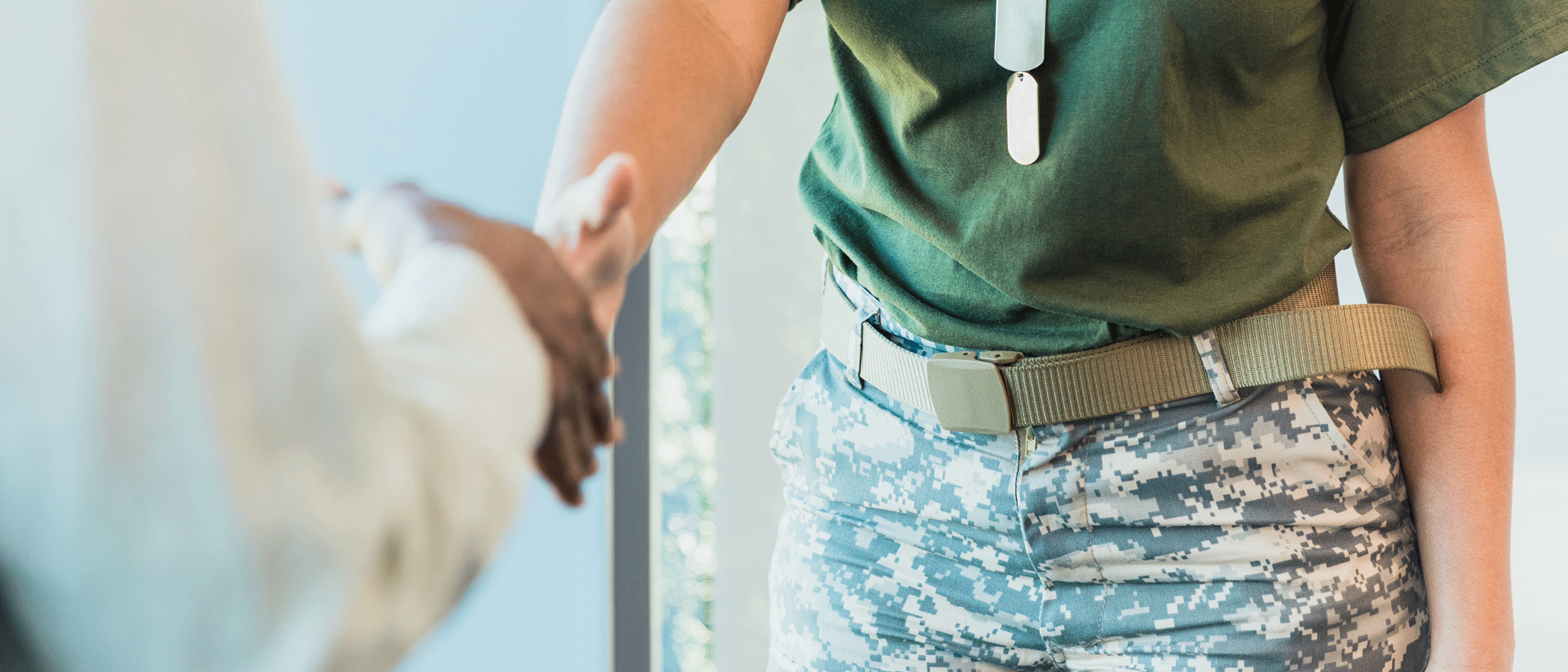With 165 health care systems across the country that care for over 9 million beneficiaries, the Veterans Health Administration is the country’s largest integrated health care system. In Texas, there are seven VA health care systems, five medical centers and 58 outpatient clinics that serve the estimated 1.4 million military Veterans in Texas.

Christopher Sandles, MBA, FACHE is the medical director and CEO of the South Texas Veterans Health Care System (STVHCS). He is also a 2019 THA Healthcare Leadership Fellow – an opportunity he pursued to bring more awareness to the breadth of the VA Health System.
“When you say that we don’t talk enough about VA hospitals and we usually focus on the big health care systems, that is exactly why I applied for the THA executive fellow program,” says Sandles. “But I say that because a lot of folks don’t realize we are one of the big systems. In fact, there is no health system bigger than us.”
At STVHCS alone, Veterans have access to acute medicine and surgery units, as well as a bone marrow transplant program – one of only three such programs that exist in the entire VA health system – a spinal cord injury unit, a polytrauma unit, an acute psychiatric hospital and two large nursing homes.
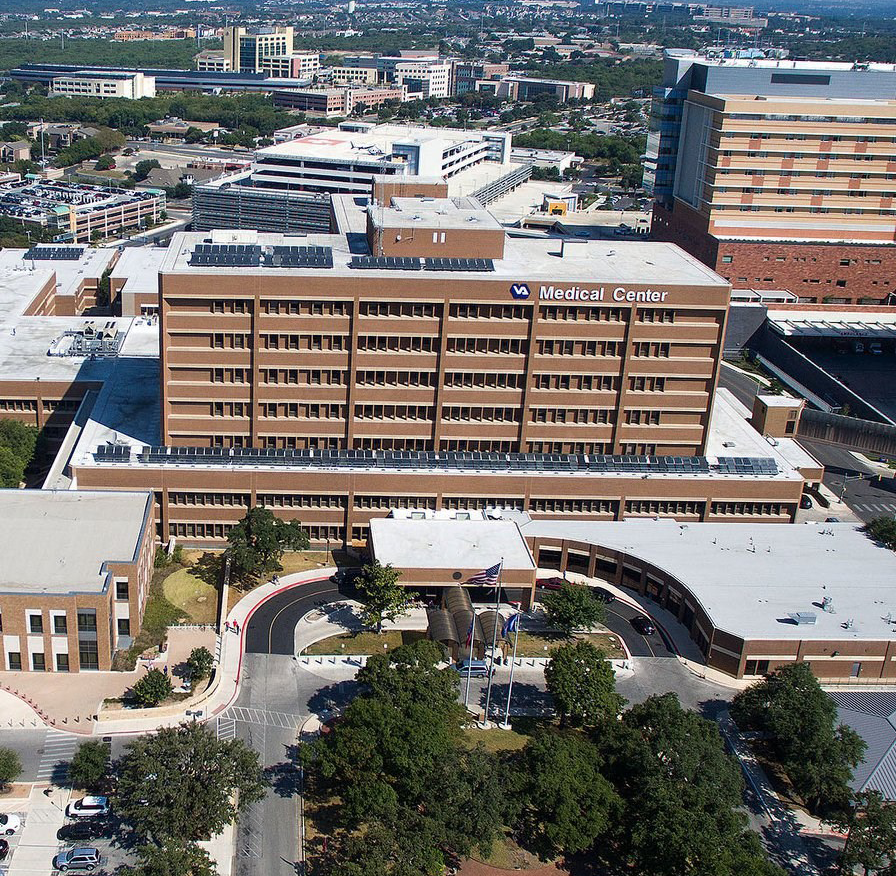
For the past 75 years, the VHA has evolved into an interconnected system of health care services. While many of these services aren’t unique to the VHA, theirs is the only health care organization that combines these services “under one roof” and integrates them to be centered around Veterans. As a result of their service, many Veterans have significant health care needs and VHA has the systemwide clinical expertise of service-connected conditions and disorders that their patients need.
Keeping Veterans at the Center of Health Care
To provide patient-driven, team-based care, the VHA follows a Patient Aligned Care Team (PACT) model that focuses on wellness and disease prevention. The PACT is comprised of the following pillars: partnerships with Veterans, access to care, coordinated care among team members and team-based care with Veterans at the center.
At the Central Texas Veterans Health Care System (CTVHCS), the PACT model guides the care of the 110,000 Veterans in their catchment area, which spans across 39 Texas counties.
“Something that is unique to the Veteran Health Administration when comparing it to private health care systems is that we operate with a Patient Aligned Care Team model,” says William Negron, public affairs officer at CTVHCS.
“Each PACT team consists of a primary care physician, a nurse practitioner, two registered nurses, a mental health provider, a social worker and a pharmacist. The purpose is to keep Veterans at the center of their health care and the decisions made about their treatment.”
To operationalize patient-centered care, a paradigm shift towards whole health had to take place. To transition from a health care system focused on finding and fixing ailments to one guided by the individual needs of Veterans, the VHA created its Whole Health program.
“VA’s Whole Health approach helps Veterans live their lives to the fullest. By developing a personalized health plan that integrates many areas of their lives, Veterans can truly take charge of their well-being and improve their health all around.”
ROBERT WILKIE, U.S. DEPARTMENT OF VETERANS’ AFFAIRS SECRETARY
The STVHCS is one of 18 Whole Health flagship facilities in the country. Whole Health is the VA’s approach to care that supports the full range of physical, emotional, mental, social, spiritual and environmental influences in Veterans’ lives through mindfulness-based medicine that includes yoga, acupuncture, tai chi, chiropractic care and other well-being programs.
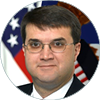
“VA’s Whole Health approach helps Veterans live their lives to the fullest,” said Robert Wilkie, U.S. Department of Veterans Affairs secretary. “By developing a personalized health plan that integrates many areas of their lives, Veterans can truly take charge of their well-being and improve their health all around. I’m pleased to recognize these VA facilities that are helping our Veterans do just that.”
Continuity of Care in a Pandemic
Over the past year and a half, hospitals and health care systems across the country faced similar challenges amid a global pandemic. At first, they struggled to acquire adequate personal protection equipment and medical equipment like ventilators. Later, they struggled to get enough COVID-19 vaccine to inoculate their staff.
The VA health care systems were no exception. Their challenges compounded with every Veteran whose health depended on continuity of care across multiple health services.
“The risk is that we have risk at all points,” says Sandles. “There was risk in the acute care setting, just like our counterparts in the private sector, but we are also fully responsible for continuity of patient care after discharge.”
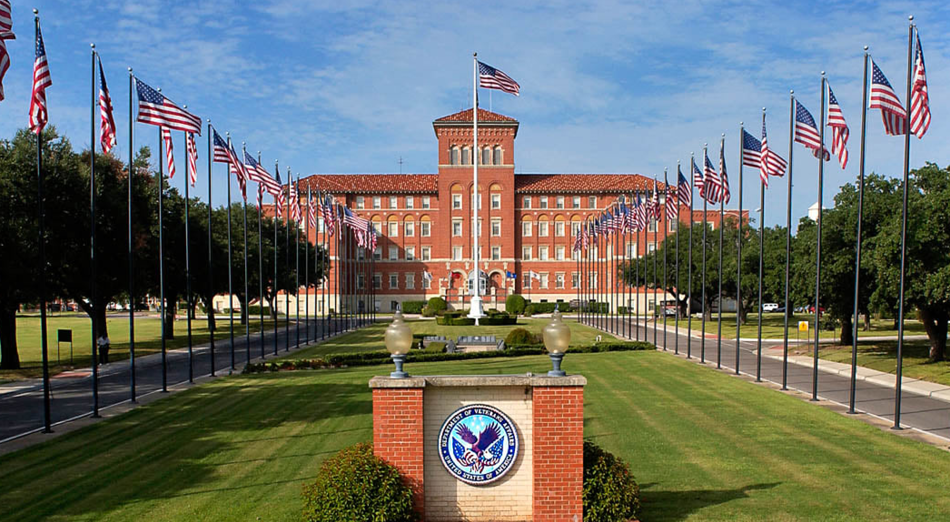
When it became apparent that hospital operations and elective services were going to be impacted by the pandemic, the CTVHCS was quick to contact every patient in their health care system.
“Between the spring and fall of 2020, we connected with about 73% of our Veterans,” says Negron. “We helped them with getting prescriptions filled, connecting them with social services if they were experiencing food insecurities, and just making sure we were staying connected with our Veterans and getting them what they needed.”
To help older Veterans in rural communities with limited access to high-speed internet, CTVHCS provided some Veterans with mobile devices equipped with WiFi connectivity so they could stay connected to their PACT and patient care coordinators.
The successful adoption of telehealth options among Veterans is shaping future health care delivery at the CTVHCS. Negron says that the health system hopes to sustain 25% of its clinical care via telemedicine as it’s a more convenient option for many of their patients.
The Fourth Mission
The VHA has four primary missions: the provision of health care, research, education and support of the Department of Defense in the case of a national emergency.
As the COVID-19 pandemic wreaked havoc throughout the country, the VHA activated its Fourth Mission in more than 45 states.
Texas was one of those states. In July 2020, when Texas experienced its first significant spike in COVID-19 cases, hospitals were inundated with patients. As case numbers rose, demand for ventilators, drugs and staff outpaced the supply.
“It’s been a terrible situation. Everybody has a family member or somebody that we know that’s unfortunately passed away through this terrible disease,” said Joe Vasquez, M.D., president of the Starr County Memorial Hospital in a July 2020 interview with KVUE.
Starr County Memorial Hospital, located in Rio Grande City, has 28 hospital beds. In July 2020, 27 of those beds were occupied with COVID-19 patients. Sandles reached out to the hospital, offering services under the Fourth Mission. Within 48 hours, patients from El Paso, Del Rio, Victoria, Starr County and Eagle Pass were transferred to the Audie Murphy Memorial VA Hospital, STVHCS’s inpatient campus in San Antonio.
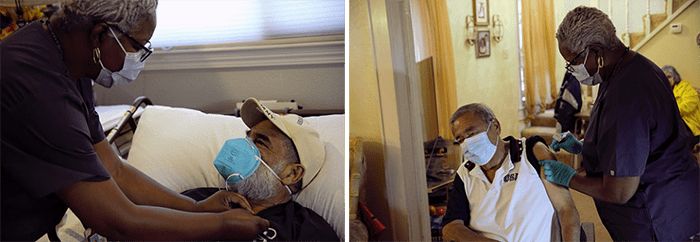
“Because such a large percentage of our staff are Veterans as well, they really respond well to national challenges and crises, so we are at a 92% employee vaccination rate. That helped us encourage our Veterans to get vaccinated because they saw so many folks who provide their health care get the vaccine.”
CHRISTOPHER SANDLES, MBA, FACHE, MEDICAL DIRECTOR & CEO AT SOUTH TEXAS VETERANS HEALTH CARE SYSTEM & 2019 THA LEADERSHIP FELLOW
“I was really proud of our activation of the Fourth Mission,” says Sandles. “We cared for probably upwards of 100 civilians because private facilities were unable to as they were over capacity.”
As part of the Fourth Mission humanitarian support, VHA has admitted 488 U.S. non-Veteran citizens for care at VA medical centers during COVID-19. Additionally, while other health systems in the private sector were impacted by supply chain disruptions, VA health systems like STVHCS provided them with PPE to get through the early days of the pandemic.
“I really felt blessed that here [in South Texas] we had a very robust emergency management program and a large stockpile of PPE that allowed us to donate a lot of PPE to other hospitals in the San Antonio area while we waited for the supply chain to catch up,” recalls Sandles.
To date, VA health systems across the country donated more than 935,000 pieces of PPE including gowns, gloves, face shields, respirators, goggles, shoe covers and other resources in support of the Fourth Mission.
Vaccinating Veterans
In December 2020, when the COVID-19 vaccine became available to frontline health care workers, VA health systems across the country worked hard to get their staff vaccinated – many of whom are also Veterans.
“Because such a large percentage of our staff are Veterans as well, they really respond well to national challenges and crises, so we are at a 92% employee vaccination rate,” says Sandles. “That helped us encourage our Veterans to get vaccinated because they saw so many folks who provide their health care get the vaccine.”
“That’s part of our culture. Many of these folks have extensive military backgrounds, so they know about the call to duty,” said Wilkie.
Once the Johnson & Johnson vaccine received Emergency Use Authorization, the CTVHCS quickly recognized the advantages of getting Veterans vaccinated against COVID-19 with one shot versus two, particularly for those living in rural Texas. Because of this, CTVHCS administered more doses of Johnson & Johnson vaccine than any other VA health system in the country.
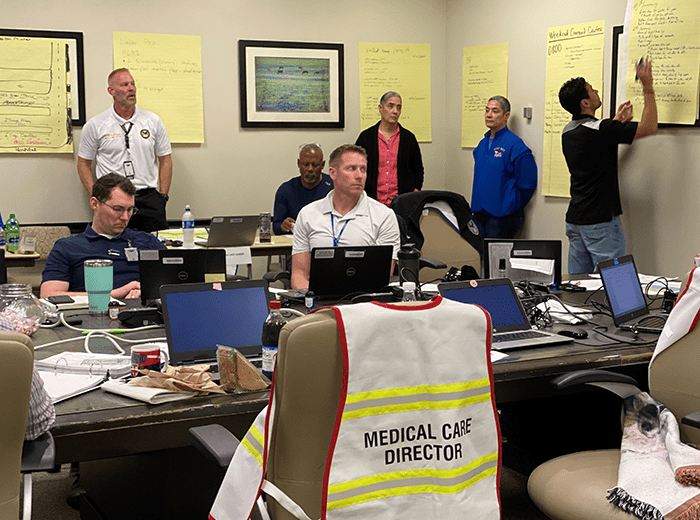
At the beginning of the pandemic, the Incident Command Center at STVHCS was tasked with preparing for the pandemic. (Photo courtesy of South Texas Veterans Health Care System)
While the Veteran population is a resilient one, it’s often considered an underserved population. To ensure Veterans received the vaccine they needed, VA health systems like CTVHCS and STVHCS contributed to the nationwide effort to vaccinate Americans by hosting mass vaccination clinics.
“When we had our first mass vaccination clinic in Austin, there was a lot of uncertainty and anxiety because we didn’t know how it was going to go or if people were going to show up,” recalls Negron. “At 6:30 a.m. we already had a line of people. By the time we opened our doors at 8 a.m., we had about 200 people in line and we got through everyone in an hour. Everyone was very pleased with their experience that day.”
“There’s no words to express what we feel,” said Jim Newman, a U.S. Marine Corps Veteran who spoke with KTBC Fox 7 News outside a vaccine clinic hosted by CTVHCS. “It’s a pleasure to know that the VA goes out of its way to get us shots. This went so smooth!”
In March 2021, President Joe Biden signed the SAVE LIVES Act into law, which expanded the VA’s ability to provide COVID-19 vaccinations to all Veterans, regardless of their VA health care enrollment status, as well as Veteran spouses, caregivers and some beneficiaries. This new law helped expand vaccine eligibility and get the necessary vaccine allocation to VA health systems across the country.
In Service Together
The U.S. Department of Veterans Affairs is the largest employer of Veterans in the country. This example is followed by the VHA and its health systems in Texas. The national average of Veteran employment at Veteran health systems is 33%. In Texas, that average is between 40-42%.
“Here in South Texas, we have 42% Veteran employment and that’s across the spectrum,” says Sandles. “That includes clinical leaders and executives, administration, clerks, human resources and housekeeping.”
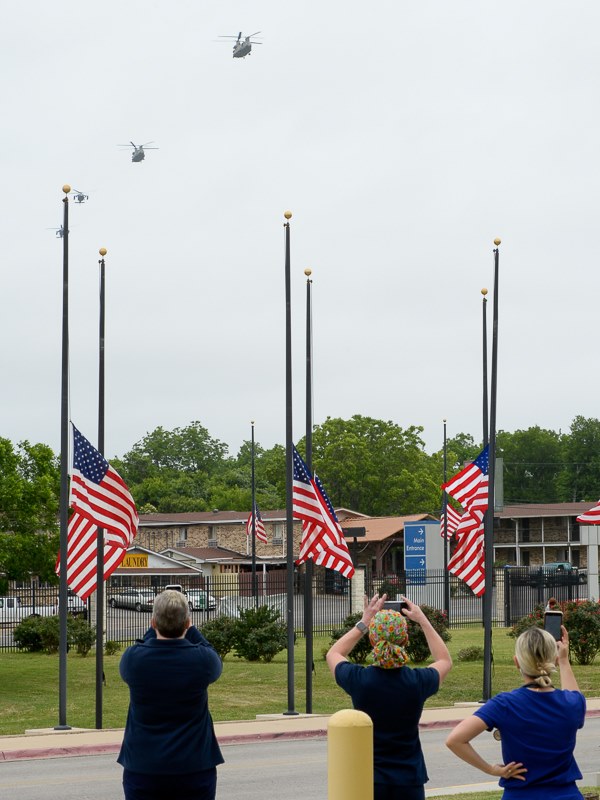
When private hospitals and health systems struggled to retain staff during the pandemic, many VA health systems found that their staff stayed.
Data shows that VA employee retention rates are better than comparable private-sector rates. Publicly reported employee-turnover rates in health care average between 20 to 30 percent. VA’s employee-turnover rates average 9%.
“We’re working with a population who have worn a uniform and raised their right hand to protect their country, it’s always good for us to say, ‘Hey, we are right here with you.’”
WILLIAM NEGRON, PUBLIC AFFAIRS OFFICER AT THE CENTRAL TEXAS VETERANS HEALTH CARE SYSTEM
“I am proud of how they stepped up to work the extra hours when we needed boots on the ground and folks responded to that the way we needed them to – the way I would expect an organization with over 40% Veteran employment. They couldn’t have made us prouder.”
Negron, who is a Veteran himself, often walks the halls of CTVHCS with fellow Veterans who he was deployed with and says those experiences contribute to the camaraderie that exists within VA hospitals.
“When we’re working with a population of people who have worn a uniform and raised their right hand to protect their country, it’s always good for us to say, ‘Hey, we are right here with you.’”
